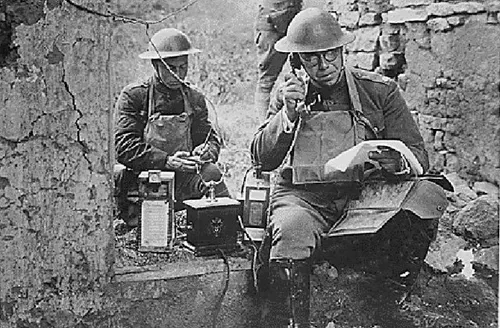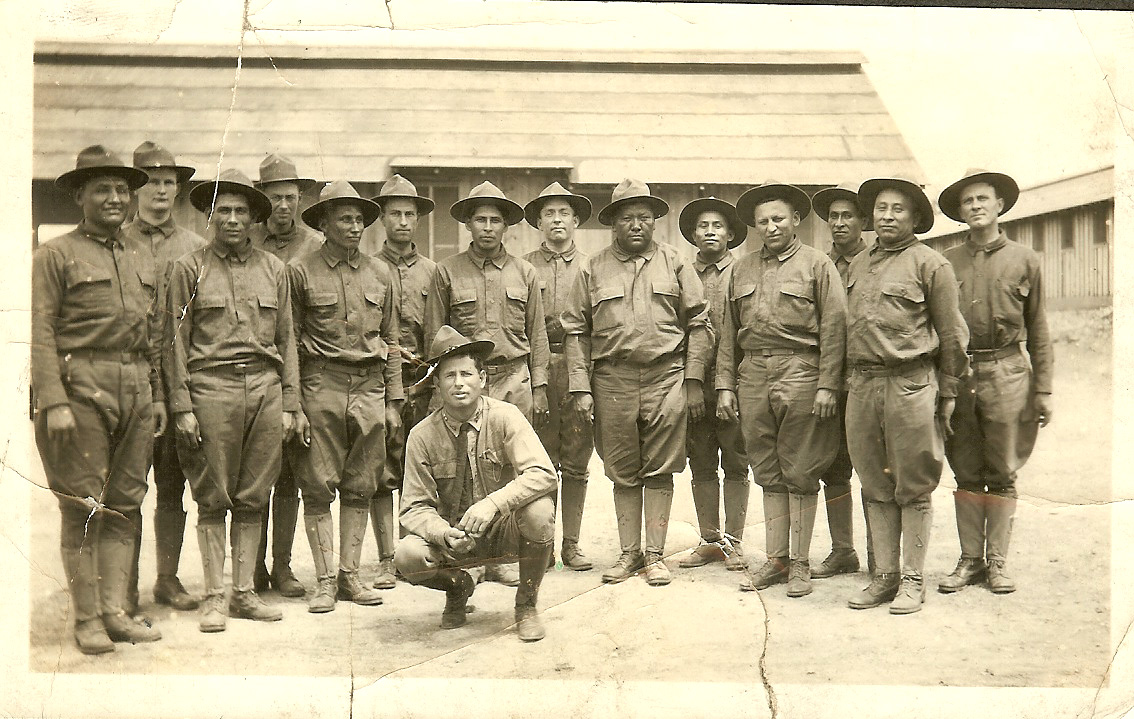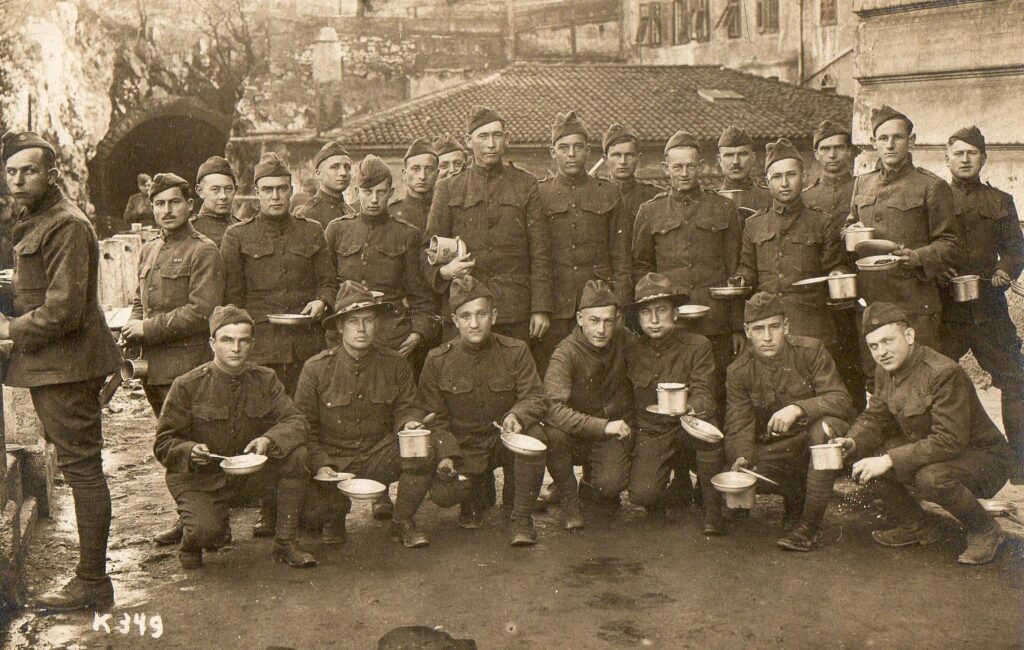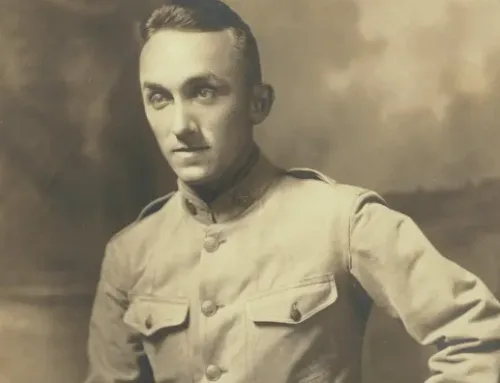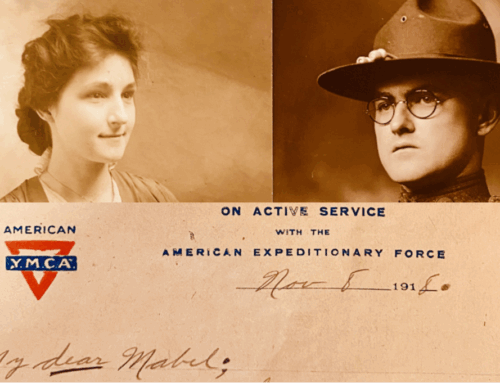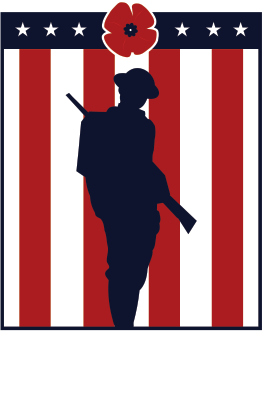Lessons from World War I: What Modern Students Can Learn Today
Published: 16 October 2025
By Vincent Henderson
Special to the Doughboy Foundation website
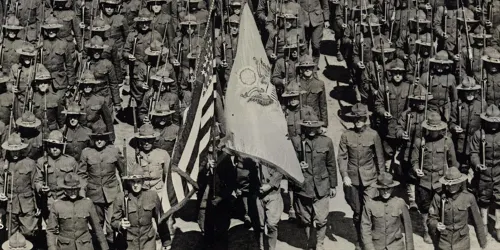
Doughboys_marching
When students flip through their history books and arrive at World War I, they often see sepia-toned photos of trenches, muddy battlefields, and soldiers writing letters home. It might feel like a distant story – a time of bayonets, telegrams, and black-and-white maps. But beneath the uniforms and dates lies a treasure trove of lessons about resilience, creativity, and human connection that remain strikingly relevant today.
World War I wasn’t just a military conflict. It was a massive test of endurance, communication, and problem-solving under extreme pressure. From engineers developing new technologies to medics improvising treatments in the field, people learned how to adapt quickly when the old rules no longer worked. That same spirit of adaptation and perseverance is exactly what students need in today’s fast-paced, ever-changing world of education.
For students juggling assignments, deadlines, and personal goals, even writing about such topics can feel overwhelming. Using a trusted service like WritePaper can be a smart way to stay organized while still diving deeply into the subject. WritePaper helps turn complex historical themes into clear, thoughtful essays — a modern version of working efficiently under pressure.
Resilience in the Face of Hardship
Few periods in history tested human endurance like World War I. Entire nations faced shortages, uncertainty, and immense loss. Yet, in the midst of it all, people rebuilt communities, supported each other, and carried on with courage. That resilience offers one of the most powerful lessons for modern students.
College life may not resemble a battlefield, but it comes with its own version of challenges – deadlines, projects, exams, and the occasional all-nighter. Building resilience doesn’t mean ignoring stress; it means finding ways to adapt and stay grounded when things get tough.
Here are a few WWI-inspired habits that can strengthen resilience:
- Adapt quickly. When plans fall apart – like a group project gone sideways – find new ways to move forward.
- Stick to a routine. Soldiers in the trenches found comfort in simple rituals; students can do the same with study schedules.
- Hold on to optimism. Even during difficult semesters, maintaining hope can make the difference between giving up and growing stronger.
Resilience isn’t about perfection – it’s about persistence. Every late-night study session or tough exam becomes an opportunity to develop the endurance that carried a generation through one of history’s hardest times.
The Power of Collaboration
One of the defining lessons of World War I was the importance of teamwork. From the front lines to the factories, success depended on people working together toward a shared goal. Collaboration wasn’t optional – it was survival.
That same lesson applies beautifully to modern education. Group projects may not compare to the coordination of troops and medics, but they share the same foundation: communication, trust, and shared responsibility. Students who learn to collaborate effectively often produce stronger results and develop better leadership skills.
Working together also nurtures empathy and patience. Just as different units during WWI brought unique strengths – engineers, nurses, strategists – every student brings something valuable to the table. The key is recognizing and appreciating those differences.
Today’s online classrooms and shared digital platforms mirror that spirit of cooperation. Virtual teamwork may look different, but it serves the same purpose – connecting individuals to achieve something larger than themselves.
Innovation Born from Necessity
The First World War was a turning point for science and technology. Necessity sparked some of the 20th century’s greatest innovations – from medical advancements to communication breakthroughs like portable radios and early aircraft engineering.
That inventive mindset is something every student can borrow. Innovation doesn’t just mean creating something new; it means finding smarter, more effective ways to solve problems. When faced with tough assignments or creative blocks, students can channel the same resourcefulness that defined the wartime generation.
Practical ways to apply this mindset include:
- Think critically. Don’t just accept information – analyze and question it.
- Experiment often. Try new note-taking methods, writing formats, or study tools.
- Be resourceful. Use available materials efficiently – sometimes the best solutions are the simplest ones.
Even the use of tools like EssayPro follows this tradition of innovation. Just as WWI engineers refined machines to improve communication and survival, modern students refine their writing to make it sound more natural and effective. The goal is the same – to work smarter, not harder.
Global Awareness and Empathy
World War I reshaped how people saw the world. The conflict touched nearly every continent and made humanity painfully aware of how interconnected nations were. When the war ended, education began to focus more on understanding different cultures and promoting global cooperation – lessons that remain crucial today.
Just like Adam Jason, an expert from EssayPro’s essay writing service, says, “For students, studying World War I isn’t just about memorizing events. It’s about recognizing the importance of empathy, perspective, and understanding the impact of global decisions. The war showed that isolation and miscommunication could lead to disaster, while dialogue and empathy could pave the way for peace.”
Modern students can carry this lesson forward by:
- Encouraging respectful discussions, even when opinions differ
- Studying history from multiple viewpoints
- Seeing education as a bridge between cultures, not a competition
Every essay or classroom debate about history becomes an opportunity to practice those same skills – empathy, curiosity, and global awareness.
Discipline and Focus Under Pressure
During World War I, organization and discipline were essential. Soldiers, medics, and engineers had to coordinate efforts precisely; one misstep could have devastating consequences. That same focus and structure are vital for students juggling multiple priorities.
Effective time management transforms chaos into progress. Setting clear goals, managing deadlines, and maintaining balance are modern versions of the discipline that once defined wartime success.
Here are a few practical ways to apply that mindset:
- Plan ahead. Break assignments into smaller steps and schedule time for each.
- Prioritize tasks. Focus on what truly matters rather than trying to do everything at once.
- Rest strategically. Even in the toughest times, short breaks prevent burnout and keep your focus sharp.
Discipline doesn’t mean being rigid – it means being intentional. It’s about having the structure to stay calm and productive, no matter how demanding things get.
Creativity Through Constraint
World War I forced artists, writers, and ordinary people to express themselves despite limitations. Poetry, songs, and letters from the trenches captured raw human emotion in the face of adversity. That same creative spirit is something modern students can channel in their studies.
When deadlines are tight or topics feel dull, creativity can transform how a student approaches work. Try exploring historical events through personal stories, visuals, or comparisons to modern challenges. Creative thinking not only makes learning more enjoyable – it deepens understanding.
Constraints often lead to breakthroughs. When resources are limited, imagination becomes your greatest tool. The same principle applies to writing essays, developing projects, or solving academic challenges.
Final Thoughts
World War I was more than a century ago, but its lessons remain alive in every classroom. Resilience, collaboration, innovation, empathy, discipline, and creativity – all were born or strengthened in that era of trial and change.
For modern students, understanding those lessons isn’t about glorifying the past; it’s about applying its wisdom to today’s challenges. Every study session, essay, and group project can reflect the same spirit that helped people overcome one of history’s most difficult times.
Because the real lesson of World War I isn’t just about conflict – it’s about how humanity, even under pressure, always finds a way to grow stronger.
External Web Site Notice: This page contains information directly presented from an external source. The terms and conditions of this page may not be the same as those of this website. Click here to read the full disclaimer notice for external web sites. Thank you.
